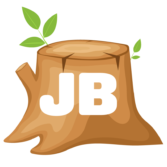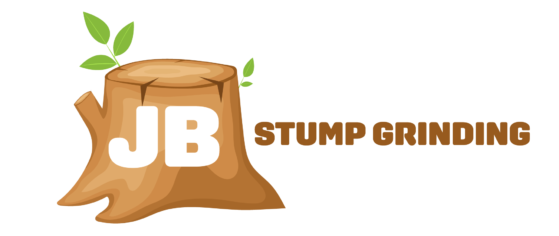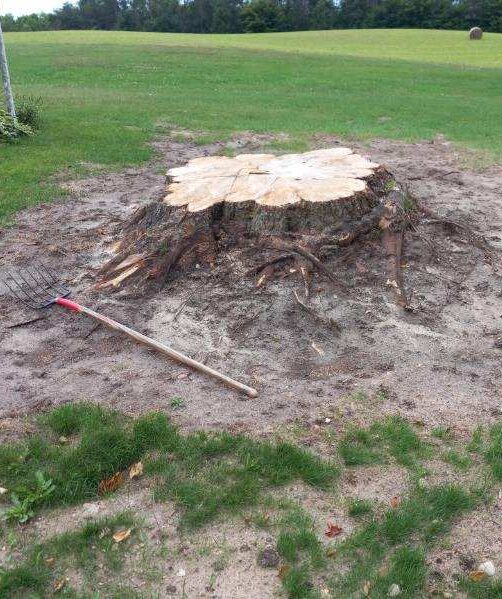
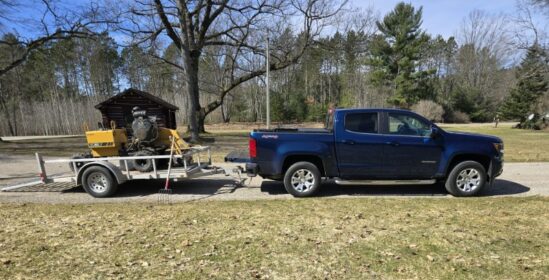
ABOUT US
Since 2003, we have been offering quality service to residential and commercial customers. Jon Brown Stump Grinding offers stump grinding, stump debris removal and multi-stump discounts.
See Us In Action!
We cover, Cadillac, Lake City, Manton, McBain, Marion, Tustin, Leroy, Luther, Mesick, Manistee, Buckley, Traverse City, Benzie, Frankfort, Leeland, Glen Harbor, Suttons Bay, Northport, Williamsburg, Elk Rapids, Kewadin, Rapid City, Alden, Mancelona, Roscommon, Houghton Lake, Kalkaska, South Boardman, Fife Lake, Gaylord, Grayling, Petoskey, Cheboygan, and surrounding areas.

What is Stump Grinding?
Stump grinding is the process when a tree service professional grinds a tree stump down using specialized equipment, called a stump grinder. The grinding is done “below grade,” meaning all visible parts of the stumps and any exposed roots are turned to mulch a few inches deep.
Stump grinders generally grind four to six inches below ground level. If deeper grinding is needed, it can be requested, although the price of stump grinding may increase. The depth to which a stump can be ground is subject to some limitations, however.
- The stump-grinding blade has a diameter of about 10 inches and can only be maneuvered up and down within a specific range.
- Other material near or around the tree may limit how deep the grinder can go. While the stump grinder is powerful, it is only designed to handle plant material, wood, and dirt.
Take note of the following:
- Fencing, concrete, brick, or rock around a stump
- Nearby trees that may have roots under the tree stump
- Swimming pools, sidewalks, driveways, and patios that may prevent the grinder from reaching all the root material
- Lawn irrigation, sprinkler systems, tree lighting wiring, and buried hoses
We generally do not grind deep enough to risk interfering with properly installed utility lines or buried cables, but unforeseen obstacles can be encountered that necessitate a shallower grind.
While we are very careful when grinding a stump, Jon Brown Stump Grinding will not take responsible for damage to irrigation lines or other items located below ground that we are not aware of. It is important to inform us of any sprinkler systems or other objects that might be in the area to be ground before the work begins.
As the blade grinds the stump and surface roots, it produces a mulch made up of tree material and dirt. The mulch produced by stump grinding can take up a much greater volume than the original stump.
Mulch from stump grinding is valuable organic material that decomposes more quickly than many other kinds of mulch, as there are generally smaller wood particles present, and more soil to help it break down. It is our standard practice to push the mulch back into the area that has been ground (backfilling). Because of its composition, the mulch does settle fairly quickly, but many people prefer to use the mulch around their yards, rather than leaving it where the stump once was.
Stump grinder mulch can be used for composting or applied in flower beds. Depending on exact composition of the mulch, it may not perform in the same way as typical hardwood mulch and may need to be replaced sooner. After some time, when the mulch has settled, it can be packed into the ground-out area, making the area ready to be prepped for laying sod or for planting a flower bed or other small plants.
In the case of a tree becoming uprooted (because of storm damage or root rot, for example), the stump cannot be dealt with as easily. If there is a large amount of root material above ground, the stump grinder may be physically unable to reach it. Depending on the type of tree and how it grew, it may pull up a great deal of dirt, turf grass, and other underground material when it falls.
Weather is also a factor that can determine how and when stump grinding can be performed. A long period of rain can cause the soil to become waterlogged. Operating a stump grinder in heavy, wet soil can not only make a bigger mess than usual but can damage the surrounding area due to the weight of the machine. It may be necessary to wait until the area dries out before attempting even a stump grind.
Even with stump grinding, some species of tree can still send up shoots and new growth from the roots left below ground. The sprouts that return after stump grinding can be trimmed or mown down and will eventually stop coming back, as the remaining roots use up their energy reserves. Commercially available woody stem killer can be used to accelerate the dieback of the roots. White vinegar can also be used as an organic alternative to commercial root killer.
The base cost for stump grinding is determined by the diameter of the stump in inches, including any above-ground roots. This measurement can be taken before or after a tree is removed. To get the right measurement, it is important to go from dirt to dirt. This means measuring from the stump edge or root point (where it touches the dirt) farthest from the trunk to the opposite edge or root point. It is also important to measure from different directions and to take an average measurement, as this most accurately reflects the area to be ground. The dirt-to-dirt measurement can be quite a bit larger than the diameter of the tree trunk. Surface roots need to be included in the stump measurement.
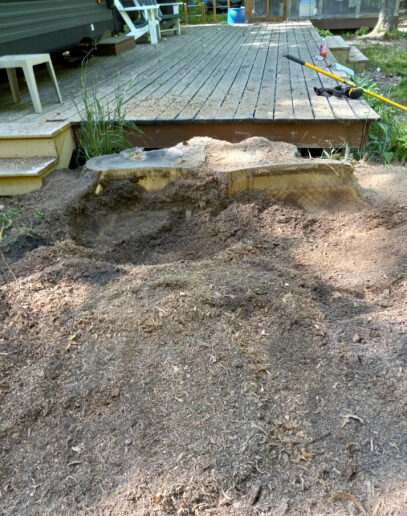
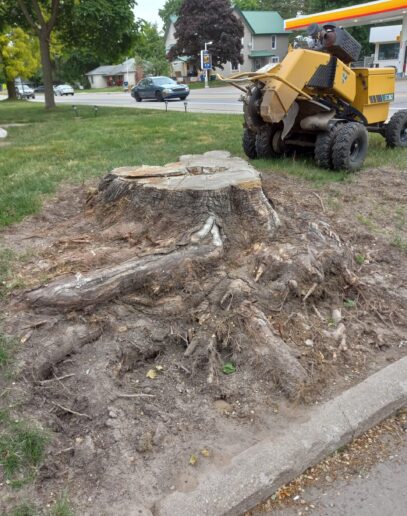
HOW MUCH DOES STUMP GRINDING COST?
The cost of stump grinding is dependent upon three main factors: the location of the stump, the size of the stump and how deep the grinder needs to go. Call us for a FREE Quote.

